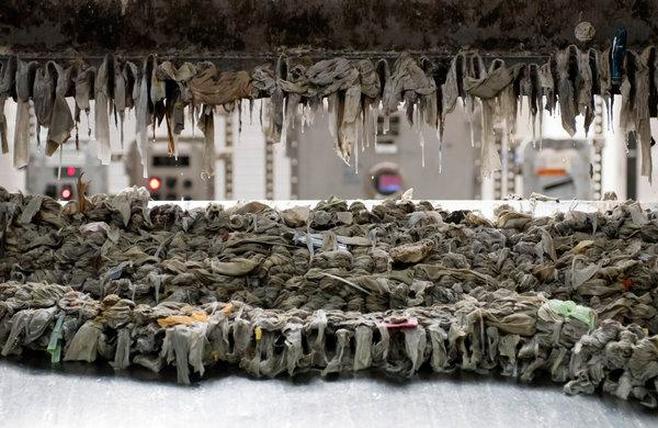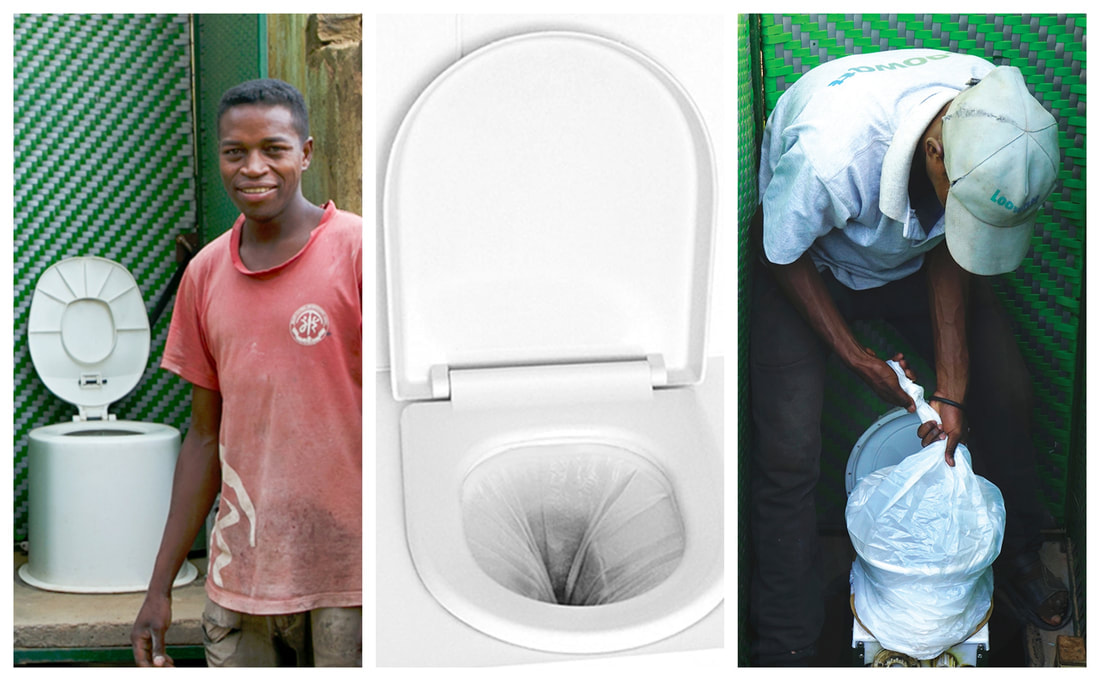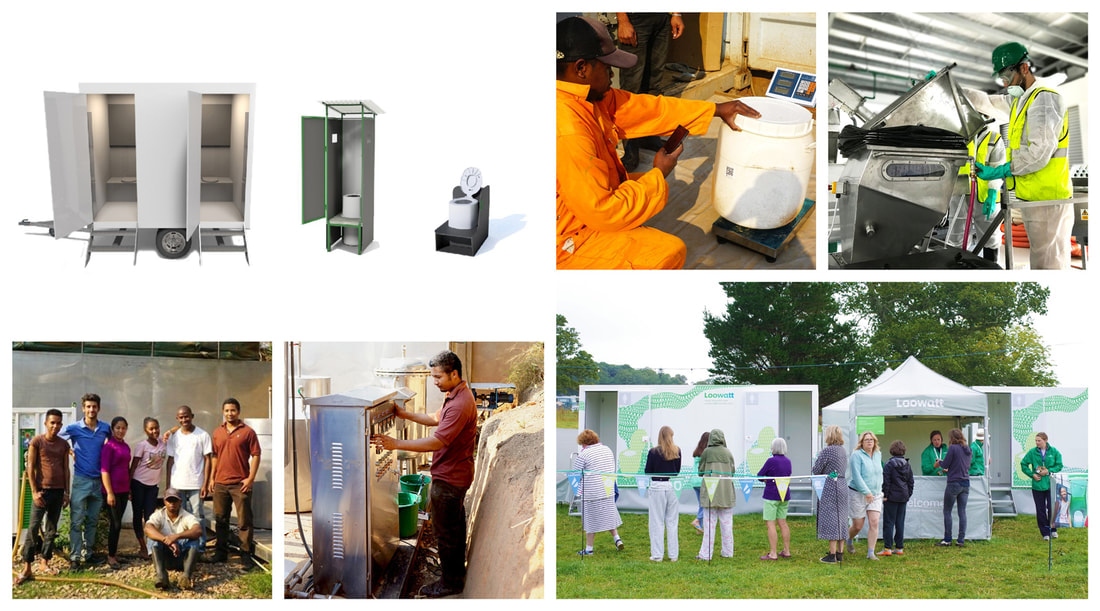|
A mechanical rake collecting solid waste (Karsten Moran for The New York Times). Both sewers and on-site sanitation systems face increasing challenges due to climate change, as highlighted by recent droughts and floods in global cities such as Cape Town and Jakarta.[1] 29% of the world’s population is served by basic sanitation: Latrines and septic tanks where waste is untreated, spreading disease rampantly, especially in floods.[2] For the 38% with access to sewers, a whopping 25% of those actually don’t lead to safe treatment.[3] And in a world where two-thirds of the population will be living in water-stressed areas by 2025,[4] more sewers won’t be the answer. For 21st Century solutions to deliver on the promise of Sustainable Development Goal 6.2—delivering safely managed sanitation, while protecting the world’s scare water resources—we need to look beyond sewers and latrines. After all, when we take away the sewers, the sanitation challenge is to transport fecal waste from household to treatment and to deal with the “un-flushables,” foreign solids, that are inevitably disposed of in toilets whether on-site or sewered. We need to consider how we integrate fecal sludge management into broader solid waste management. Solid waste and human waste often travel together. In the UK, Thames Water has said that it clears five blockages from its sewer network every hour, and removes 30 tons of diapers, menstrual hygiene products and baby wipes that were flushed down toilets into its network every single day.[5] In countries with weaker fecal and solid waste management, this waste travels down waterways: It should not be surprising that 90% of the world’s ocean plastics come via 10 rivers, 8 in Asia and 2 in Africa: Regions with growing populations where waste systems lag behind.[6] What can municipalities do with these filthy traveling companions? At Loowatt, we have been thinking about these problems, and how we can link up solutions. Because our sanitation technology uses polymer film to facilitate a waterless flush and clean servicing, we developed the mIBS pre-processing equipment, a flexible, mobile machine, that separates polymer film, as well as “un-flushables,” for separate treatment. The organic waste stream is then ready for pumping direct to anaerobic digestion or other value-generating treatment. We have discovered many benefits to this approach. Not least, Loowatt can accept the inevitable reality of menstrual hygiene products—an oft-maligned challenge for most toilets. The separated film and “unflushables” then comprise about 2% of Loowatt’s waste stream, and must also be treated in appropriate closed-loop systems. Early on, Loowatt worked with a polymer film that dissolved in anaerobic digestion in 7 days, but production ceased. After switching to partially digestible and fully compostable films (European standard EN13432), in 2018 we began testing dual material approaches—compostable film sent for industrial compost, and polyethylene film sent for recycling. The latter option posed some technical challenges as the film output, while dry to the touch, is still fecally contaminated. Both, however, proved feasible and are now being analysed for cradle-to-cradle lifecycle. From the standpoints of both logistics and technology, integrating fecal sludge and solid waste management offers great opportunities: linking up collection systems, optimising energy yields from co-digesting organic wastes, and applying appropriate treatment to all non-organic wastes. Domestic waste collection has proven successful in many municipalities, with “zero waste cities” starting to happen, and emerging market cities stepping up waste collection through results-based financing from the World Bank. With the right mix of logistics and technology, fecal sludge from waterless toilets and solid waste from households could both be on the road to reuse and recycling systems, to ensure a cleaner future. Loowatt are attending Word Water Week in Stockholm. We will be exhibiting alongside the RELX Group (Norra Latin, Ground Floor, MV7) and are grateful for their support since winning the RELX Group Environmental Challenge in 2016.
Footnotes [1]https://www.ft.com/content/7c748386-8f95-11e8-b639-7680cedcc421, https://www.bbc.co.uk/news/world-asia-44636934 acc. 18/08/18 [2] JMP Report, Progress on Drinking Water, Sanitation and Hygiene, 2017 [3] Ibid. [4] http://www.un.org/waterforlifedecade/scarcity.shtml acc. 18/08/18 [5]https://www.bbc.co.uk/news/av/uk-england-london-45200046/the-unflushables-blocking-london-s-sewers acc.22/08/18 [6]https://www.scientificamerican.com/article/stemming-the-plastic-tide-10-rivers-contribute-most-of-the-plastic-in-the-oceans/ 18/08/18
1 Comment
Loowatt supplies waterless flush toilets and sanitation solutions for global markets. We have been developing and testing whole value-chain sanitation hardware in the UK (public toilets) and Madagascar (household toilets) since 2013. We have been working with utilities in both countries since 2016. As of August 2018, our toilets have been used by over 100,000 customers and we have delivered 200 tonnes of fecal sludge to closed-loop treatment.
We are often asked, Why the ‘dual market’ focus? There are in fact many reasons for this strategy, but the single most important reason is, we’d be missing out on too much learning if we did things differently. Working with utilities internationally has taught us that despite geographic and economic differences, they face common challenges: Dealing with increasing water scarcity, delivering uninterrupted service, managing high operating costs, and trying to offset those costs through waste-to-resource. Working with utilities ensures that the technology we develop helps to better address their core challenges. Improving waste-to-resource: In the United Kingdom, Thames Water treats 90% of its sludge in anaerobic digestion systems and generates 15% of the energy it uses. They are constantly striving to increase the energy they produce, so to reduce their operating costs. Thames Water is working with Loowatt to analyse the value of captured waste from waterless toilets as a direct input to utility-run anaerobic digestion systems. They believe that Loowatt waste is likely to generate more financial return in treatment than toilet waste diluted by sewers or dosed with chemicals.[1] Optimising system capacity: In Madagascar, Loowatt has partnered with SAMVA (the waste utility) to gain access to the city’s treatment facilities. This partnership is providing Loowatt Madagascar the treatment capacity to scale our household service, while supporting SAMVA’s interest to have the facilities run at capacity. Providing a waterless toilet service to end-customers: In 2017, Loowatt participated in Laguna Water’s Portable Toilet Service pilot for the low-income, high-density areas of the Laguna Province. In the multi-criteria evaluation, Loowatt’s technology outperformed the other vendor’s, with the decisive criteria being financial performance and customer satisfaction.[2] We chock up much of this success to experience operating our own services in collaboration with utilities in two countries. What are the expectations for non-sewered sanitation? We believe that all government, municipal and utility stakeholders expect a robust service that supports broader public health. While the planning and financing of functional sewer and treatment systems is well understood, less is clear on how to include non-sewered sanitation service approaches. For governments, municipalities, utilities and financiers to take on the hard work of building the frameworks and financing for new sanitation solutions, they need assurance that those solutions will meet high standards. From our experience, this means that new sanitation solutions must:
Technology providers like Loowatt that meet these criteria must work with governments, municipalities, and utilities to show that non-sewered toilets can, in operation, meet the needs of their constituents. By fostering more operational collaborations between technology providers and public partners, we can build a healthier living environment for our people and our planet. Loowatt are attending Word Water Week in Stockholm alongside the RELX Group (Norra Latin, Ground Floor, MV7). We are grateful for their support since winning the Environmental Challenge 2016. Footnotes [1] Thames Water Innovation and Loowatt, IUK HIT-G Project 2017-2018 [2]Utility Business Model (Piloting the PTS in Laguna, Philippines): https://forum.susana.org/161-sanitation-as-a-business-and-business-models/22429-utility-business-model-piloting-two-portable-toilet-systems-pts-in-laguna-philippines |
Toilets |
|




